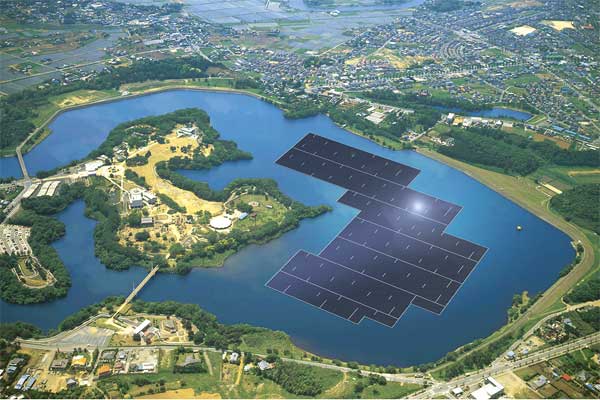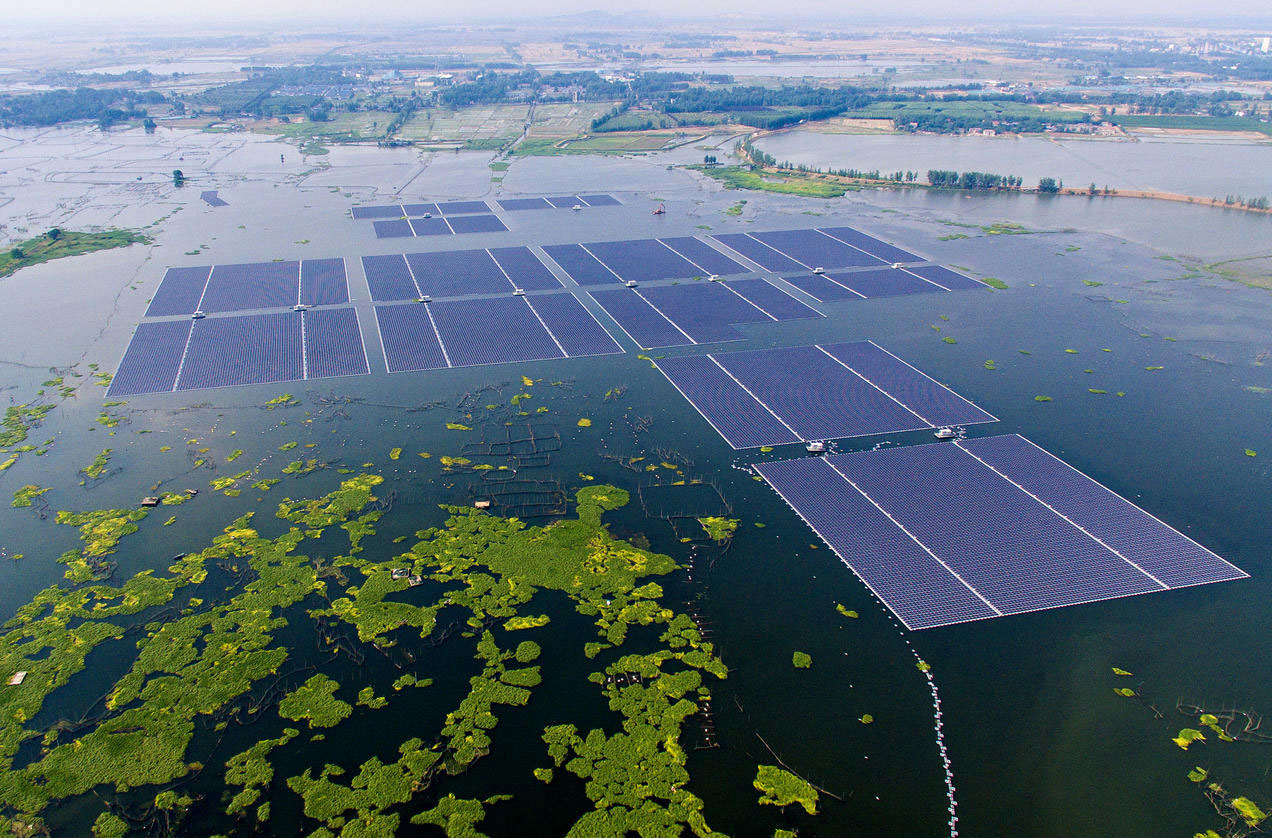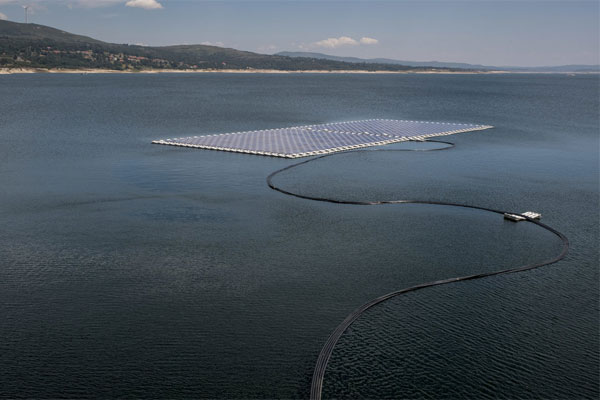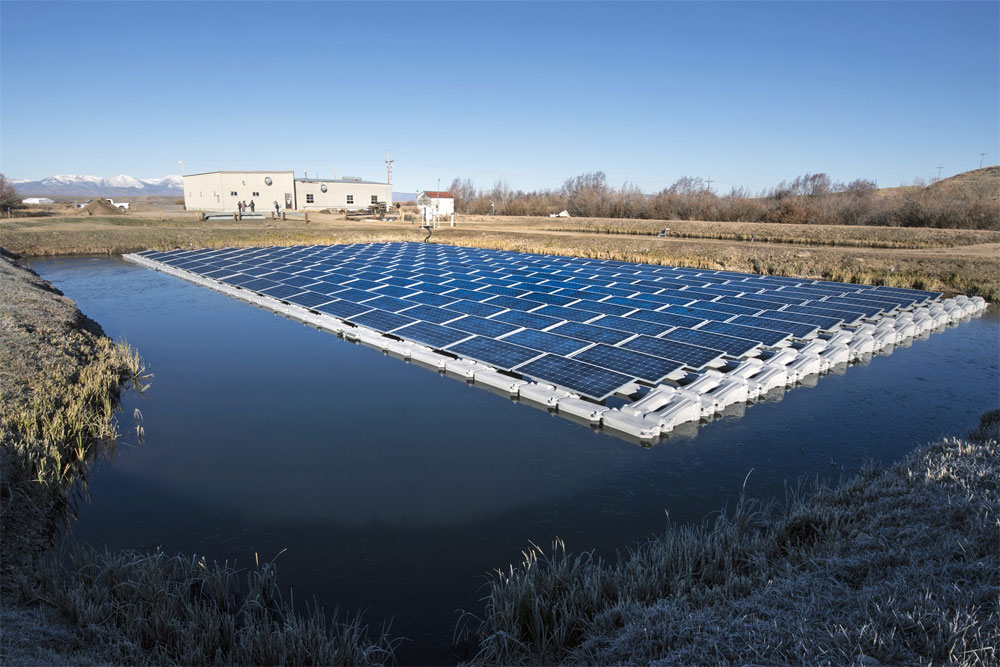In land-scarce countries in some parts of Asia, the widespread use of solar panel systems for the production of electricity is hindered by ground space constraints and limited roof space.
Local solar power companies constantly compete for land with agriculture, industry and fast-growing populations. These companies have recently found an innovative alternative: placing floating panels on lakes, dams, reservoirs and the sea.
Floating solar plants also referred to as “floatavoltaics” or FPV, is an array of solar panels on a structure that floats on a body of water, typically a dam or a lake.
“Floating solar technology has huge advantages for countries where land is at a premium or where electricity grids are weak,” said Riccardo Puliti, Senior Director for Energy and Extractives at the World Bank. “Governments and investors are waking up to these advantages, and we are starting to see interest from a wide range of countries in Africa, Asia, and Latin America.”
Japan, in particular, is expected to lead the way for floating solar panels primarily because of the low availability of land coupled with limited natural resources.
Japan is home to 73 of the world’s 100 largest floating solar plants. The biggest is located at the Yamakura Dam.

Rendering of the 13.7MW plant on the Yamakura Dam reservoir in Chiba Prefecture, Japan (Photo: Business Wire)
This single installation has the potential to power more than 5,000 homes. The project also saves over 8,000 metric tons of carbon dioxide every year.
Nearly half of all the floating solar power plants in Japan are located in one prefecture, called Hyogo.
This is probably because the prefecture has over 40,000 agricultural reservoirs that provide plenty of space on which to install the floating panels.
By installing on lakes, reservoirs, and dams, floating solar panels save valuable space on land.
They are also up to 16 percent more efficient than solar plants that are installed on land. This is due to the cooling effect on the system provided by the water beneath the panels.
Another very important cost-saving fact is that it is easier to connect these systems to the grid when compared to remote wind farms.

Floating solar energy farms, like this one in Huainan, China, could power upwards of 20 percent of California’s total energy needs. (Imagine China/Newscom)
The systems cover much of the water body on which they are installed, which means water evaporates less because of low exposure to direct sunshine and wind. This saves fresh water supply which is important in farming prefectures. It also slows the growth of algae which is harmful to fish species.
The use of floating solar has grown more than a hundred-fold in less than four years, from a worldwide installed capacity of 10 megawatts at the end of 2014 to 1.1 gigawatts by September 2018, according to the first market report on floating solar, produced by the World Bank Group.
The global floating solar panels market is expected to grow from $13.8 million in 2015 to $2.7 billion by 2025, according to a new report from Grand View Research. The technology is expected to witness significant growth over the forecast period owing to the rising demand for reliable renewable power generation.
Furthermore, the ability to mitigate land cost is expected to favor demand over the projected period.
The growing focus of various governments towards the use of renewable energy for power generation coupled with lower environmental pollution by reducing the dependence on fossil fuels is expected to have a positive impact over the projected period.

Floating solar panels at Portugal’s Alto Rabagão dam. This is the first project where the floating panels work in tandem with the dam’s hydroelectric rotors. (HORACIO VILLALOBOS/CORBIS VIA GETTY IMAGES)
What does this mean?
Well, this means that the technology could soon provide more power than conventional land-based systems.
The pace is picking up as India recently announced it plans to create 10 gigawatts of floating solar capacity. China currently accounts for most of the more than 1.1 gigawatts of floating solar capacity now installed, according to the World Bank.
In some cases floating solar installations may require additional costs than more traditional types of solar panel installations. Because this is a relatively new technology that requires specialized equipment and more niche installation knowledge, it typically requires a higher price tag than installing similar-sized solar farms on rooftops or solid ground.
But as with traditional solar panel systems, the costs of installing floating solar panels are expected to continue to drop as the technology advances.
“As the cost of solar equipment comes down, many developers are looking at water with grid connection,” said Jenny Chase, head of solar analysis for BloombergNEF in London. “This seems to be a great combination of long-term and well-structured planning, with individual projects identified already.”













Comments